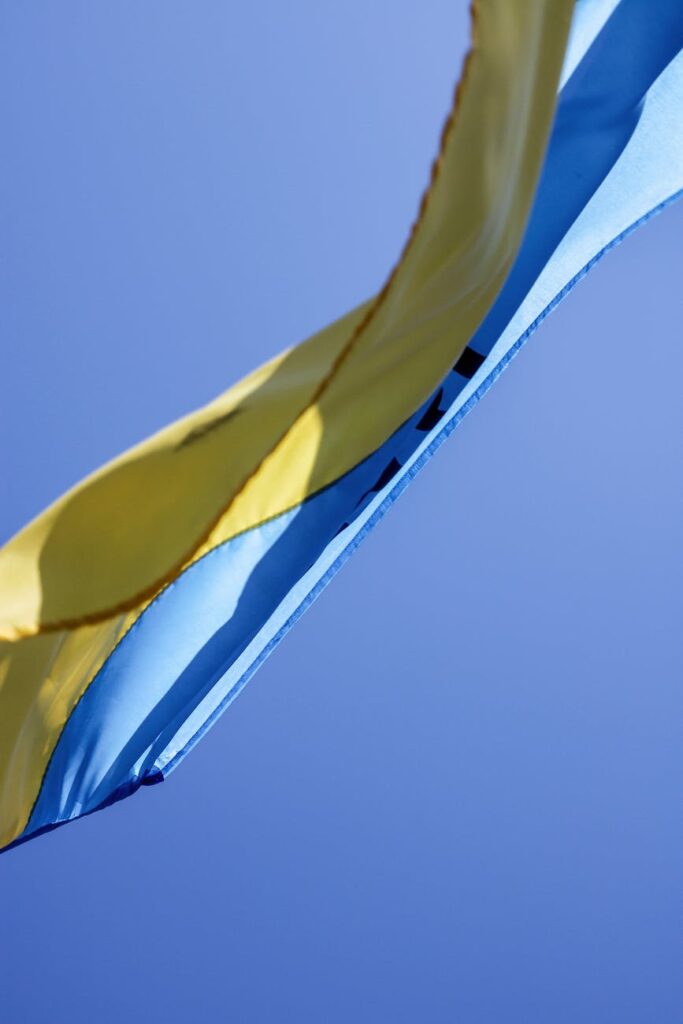
By Gordon Hahn, Russian and Eurasian Politics Blog, 1/30/23
We are entering the most dangerous phase of the NATO-Russian Ukraine war up till now. The West is undertaking a major escalation in the war by increasing the lethality of weapons it is supplying Ukraine to include tanks and the largest tranche of military equipment supplied to Kiev so far. Meanwhile, Russia is on the verge of an offensive on the background of slow but steady gains in the east, taking Soledar, moving into Vugledar (Ugledar) and the outskirts of Bakhmut (Atemevsk), threatening Ukrainian forces with operational encirclements in several areas. Russia now has available in and around Ukraine 5-600,000 regular troops, almost none of which have been used so far, with Moscow having been relying on the DPR and LNR forces, the Wagner troops, Chechens, and massive attacks from the air by artillery, rockets, drones and such in previous phases of the war.
The false myth that Russia is losing the war is being exposed for the propaganda lie it has always been, risking the loss of public support in the West. That exposure is leaving the ‘king even more naked’ as the Russian offensive gradually gains steam over the next two months. Russia was not militarily defeated in Kharkiv and Kherson when it retreated from those places. In the latter case, there seems to have been a tacit agreement between Moscow and Kiev that Russian troops would withdraw behind the Dnepr, and Kiev’s forces would not harass them much at all and the agreement appears to have held. In both cases, Moscow decided to withdraw forces because it was badly outnumbered and sought to avoid a fight and high casualties. Russian forces have been making steady progress over the last few weeks, recently taking Soledar. They are in the process of establishing operational encirclement around Bakhmut as well as Avdiivka and have moved deeply into Mariinka and Vugledar (Ugledar); all of which could trap 10,000s of Ukrainian troops. More importantly, the offensive that is slowly ramping up will consist of larger combined force operations that is most likely to more resemble actual all-out total war than the hitherto ‘special military operation,’ though I expect some considerable continuing restraint to preserve civilian and Russian military lives as much as is possible. Whether the offensive will include a ground and/or air assault on Kiev and an attempt to encircle and/or in intensive bombing campaign targeting Zelenskiy and the government infrastructure – thus far left to be – is impossible to know for sure, but is likely.
NATO is now openly at war with Russia and intensively escalating that war. This is not Russian propaganda; it has been a poorly held secret for months. NATO and the US provide: all of the kinds of lethal weapons; strategic, operational, and tactical intelligence; means of communications; and strategic and operational planning as well as tactical and weapons training. Polish and perhaps Rumanian and other state’s soldiers have been fighting out of uniform in Ukraine against Russia. NATO has also organized Belarusian and Russian opposition units that are fighting Russia and allied forces in Ukraine.
The ‘NATOization’ of the Ukraine war and the effort to organize opposition military forces against Moscow and Minsk is making it more likely that Russia will pressure Belarusian President Aleksandr Lukashenka to bring Belarusian forces into the war along with Russia’s own units deployed there, if only as part of the Russian-Belarusian ‘joint Union force’. Lukashenka could put up little resistance, especially if it appears that Russia’s efforts are failing or, more obviously, if Ukrainian or Polish elements were to undertake some sort of operation on Belarus’s territory. Clearly, Lukashenka’s prospects for retaining his hold on power decline sharply should Russia lose this war, given the likely repercussions for Putin’s rule in the event.
Moscow may soon decide that since NATO countries are legally definable as combatants it has the right to respond in some way. Responses could include: financing terrorist attacks, sabotage, destroying non-Russian oil and gas pipelines, rejecting all international copyright law, targeting staging sites in Poland or Rumania from which supplies and newly Western-trained troops are transported to Ukraine—who knows, maybe all of the above. That could provoke open NATO-Russian warfare on European and Russian territory, which is already being hit by the Ukrainians using US missiles.
If the escalation stops with the new wave perhaps there will not be any such Russian responses, but Western ‘appeasement’ is unlikely. War is in the air from Washington to Warsaw to Moscow.
The always insightful Colonel Douglas McGregor is wrong when he says that in Washington they do not understand that Russia is a country that can and if need be will mobilize its entire population if its leadership perceives a threat sufficient to warrant it (www.youtube.com/watch?v=K74GonVNYO4&ab_channel=JudgeNapolitano-JudgingFreedom). They understand this full well in DC and hope to force Putin to engage such a mobilization and trap Putin in a quagmire – regardless of the costs to Ukraine — with everything else that will entail for Russia’s economic efficiency, residual freedoms, and political stability in the long-term. In other words, they hope to saddle Putin with a war that will ultimately destabilize the political system and lead to his downfall. The time frame in such thinking is probably connected with the next Russian presidential election scheduled for 2024. Elections are focal points that often spark ‘color revolutions’ such as Ukraine in 2004, Georgia in 2005, and the failed 2012 white ribbon protests in Russia. This is the idea driving the West’s foolhardy strategic escalation of the war and complete lack of interest in cultivating peace talks. The foundational drive is that any talks will fail if Washington and Brussels do not agree to end NATO expansion at least in the case of Ukraine; something the West is unwilling to do. This is why I have been calling the ‘special military operation’ or ‘Russia’s war in Ukraine’ the NATO-Russian Ukraine war.
The West now also is risking the great danger that what remains of the Ukrainian state will be destroyed for the goal of removing Putin from power. But any fall of Putin from power will change neither Russian resistance to NATO expansion and Western color revolutionism (regime change policies or ‘democracy promotion’) nor the startegies and tactics Moscow uses to carry out that resistance. Washington has a dearth of knowledge about or willingness to acknowledge and incorporate into policy Russia’s long history of being targeted by Western powers for political interference and manipulation and military intervention and invasion and the resulting centrality of security vigilance in relation to the West in Russia’s political and security culture. And destruction of the Ukrainian state will eliminate the prospect of stabilization through the transformation of Ukraine into a neutral buffer zone between NATO and Russia, a prospect that should be acceptable to all sides, including Kiev, after this terrible war.
The absence of American statesmanship – really, the presence of American anti-leadership, even international subversion – is bringing catastrophe. Washington should be pressing both sides to negotiate not just be sending more, more and still more lethal weapons to Kiev. This is a criminal abandonment of leadership that risks us all with World War III and nuclear conflagration. It is perhaps more and surely deeply disturbing – and certainly must be raising red flags in Moscow – that there is a senile, arrogant, corrupt American president threatened by congressional investigations and perhaps impeachment for crimes he and his son committed, who is deciding how far the West’s involvement in the NATO-Russian war in Ukraine should go. The possibility that Joe Biden is not in charge or is being profoundly manipulated by a coalition of Washington Democrat Party-state and globalist radicals is no more comforting.
Overall, the script is one that seems to have been written in Hollywood if not in Hell itself. Can Humankind or Heaven amend a happy ending? I am having my doubts.
How will 2023 play out? Aside from all that has been said above for the moment, 2023 is unlikely to see an end to the war. Russia’s offensive will be methodical and likely slowly grind down the Ukrainian army. The influx of large quantities of Western weapons — tanks, armored fighting vehicles, armored personnel carriers, and much more, including it seems also jet fighters — could stall that offensive but is not likely to prevent a Russian military victory on the ground. However, the costs to Russia (not to mention Ukraine!) in blood and treasure will be far greater than previously. This combination of Russia’s attainment of a position of strength on the battlefield and rising human, financial, and political costs could create a willingness in Moscow to more earnestly pursue ceasefire or a more general peace settlement at the year’s end.
2024 might see a settlement involving Moscow’s core demands: no NATO expansion to Ukraine, recognition of Crimea, Donetsk, Luhansk, and at least part of Zaporizhe and Kherson Oblasts as Russian territories, and de-nazification of Ukraine. But Ukraine and the West would need a face-saving compensation. If Moscow’s forces drive to the Dnepr, then confining Russia’s territorial gains to the already annexed territories would constitute one Russian compromise. Kiev could receive Western security guarantees (imbedded in a new overall European security architecture) and war reparations in some form. But all this seems unlikely at the moment, and one senses it is more likely there will be escalation up to and including NATO’s direct involvement. After all, it is already a NATO-Russian war.


